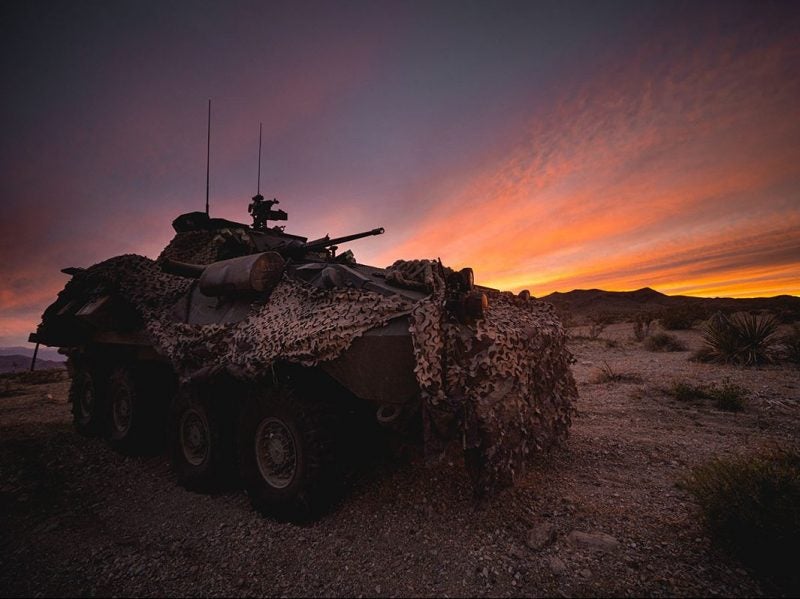
The US Marine Corps has said it is working towards the next phase of its plans to replace the in-service Light Armored Vehicle (LAV) with a modern Advanced Reconnaissance Vehicle (ARV).
The first LAV variant was first introduced into the US Marine Corps and since then has seen service in the Middle East during the Gulf War, Iraq and Afghanistan.
The Corps has selected General Dynamics and SAIC to manufacture prototype vehicles, which the US Marine Corps Systems Command (MCSC) said are expected to be ready for evaluation in the fourth quarter of this year.
MCSC’s LAV portfolio programme manager John “Steve” Myers said: “Any ARV path forward will continue to be informed by the ongoing [Office of Naval Research] technology demonstrator effort, the ARV analysis of alternatives, phase III force design outputs, additional government [requests for information], senior leadership direction and industry feedback,”
Work on the LAV replacement is being coordinated by MCSC, Office of Naval Research (ONR) and the Capabilities Development Directorate of Headquarters Marine Corps (CD&I).
The replacement effort is underway after a capability-based assessment found the USMC’s Light Armored Reconnaissance Battalions had shortfalls when pit against a near-peer threat. The need to update the Marine Corps armoured vehicles capabilities come as the force plans to cut all of its tank battalions by 2030 as part of a sweeping force structure overhaul.
MCSC said: “CD&I emphasised the need for a modern, purpose-built ARV. As the core-manned, next-generation system, ARV must possess transformational capabilities to enable LAR Battalions to gain contact with and collect on peer-threat forces.
“It must accomplish this goal without becoming decisively engaged, while also successfully waging the counter-reconnaissance fight.”
The ARV requirement is described by the Marine Corps as a ‘transformational required capability’. ARV diverges from the existing LAV include the inclusion of a “battle management system, enhanced vision technologies for increased situational awareness, and target tracking and engagement capabilities.
The Corps is on course to issue a final request for prototype proposal in the spring of 2021.
The new vehicle is seen as complementing the US Marine Corps to a naval expeditionary focus, as outlined in the Corps 2030 force restructure plans. Originally ARV was seen as a straight replacement for the LAV, however, since then the focus has shifted.
MCSC added: “Over time, officials began to view the ARV as a vehicle platform equipped with a suite of advanced reconnaissance capabilities, with an open system architecture that
can sense, shoot, move, communicate and remain transportable as part of the Naval Expeditionary Force.”
The effort to replace the LAV is also seeing input from the US Army’s optionally manned fighting vehicle (OMFV) programme. The Marine Corps noted commonalities between the two efforts and added that the US Army, Navy and Marines are working together to ‘to ensure collaboration for those capability gaps.’
The Marine Corps was set to hold an industry day to support the competitive prototyping phase in May of this year, however, the ongoing spread of the Covid-19 coronavirus pandemic has delayed this until closer to the end of 2020 at the soonest.
MCSC project lead for ARV Maryann Lawson said: “We still want to hold an industry day so we can have an open discussion with industry, provide more clarification and answer any questions from our industry partners.
“PM LAV will focus efforts targeted on industry RFIs and strategic small group engagements,”



